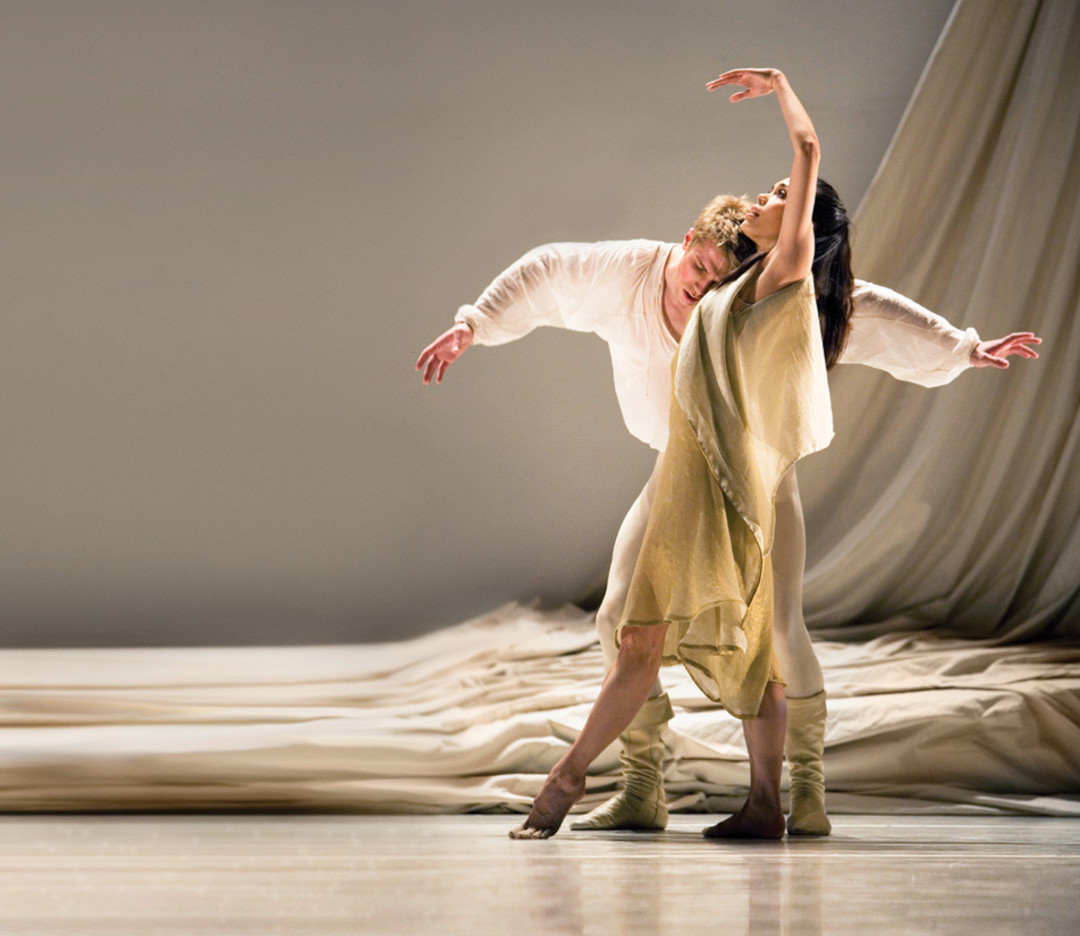Such Sweet Sorrow

PROPELLED BY ITS stirringly cinematic Prokofiev score, Jean-Christophe Maillot’s Roméo et Juliette at Pacific Northwest Ballet boasts a playful, erotic spontaneity that gives off the pop fizz of a heady movie romance (there are even opening credits before the curtain rises). Tell any friends who roll their eyes at story ballets that this one, which premiered at Les Ballets de Monte-Carlo in 1996, is no puffed-up Shakespeare pantomime: It’s the touching embodiment of two doomed lovers in thrall to the perilous heat of their youthful passions.
Principal dancer Lucien Postlewaite portrayed Romeo in PNB’s successful debut staging in early 2008 (alternating with James Moore). During a brief phone interview, he shared his passion for the role and his thrill at the production’s return.
For a dancer, what distinguishes this Roméo et Juliette from more conventional story ballets? When the stagers were here working with us they kept telling us to shed our ballet postures. And usually there’s a lot of pantomime and gesture in traditional story ballets. But it’s about the acting here—as opposed to gesturing I love you, I have to act it. The choreography is infused with so much emotion that it doesn’t require a really obvious and overt kind of gesture.
Does your preparation for the role compare at all to how an actor would approach the same part? If I’d been unaware of the complexities of the character then, yes, I’d do a lot of research, much like an actor would. But I’ve always loved Romeo and Juliet. I’ve seen the Oregon Shakespeare Festival in Ashland do it and many other different versions, so I had this wealth of knowledge about where I wanted my character to go. I did, though, come into it with a preconceived idea of the way that Romeo should carry himself that had to be changed. I grew up watching a lot of princely roles and although I know Romeo’s not a prince I thought of him in that sort of way. I came in carrying myself aristocratically. The people from the Ballets of Monte Carlo kept saying, Lose that. They didn’t want to see my idea of Romeo, they wanted to see me.
Aside from the time involved onstage, how different is it to sustain a character in a story ballet as opposed to just being yourself in a dance piece? There’s such a clear arc to the character’s development that when I first go on stage I’m just kind of preparing to be the naïve playboy who’s in love with life. I’m not even thinking about the rest. We’ve rehearsed it to a point where we know which emotions need to be nurtured in which places. It becomes natural even if it wasn’t natural before. My mom saw the show and asked me, “Where does all this acting come from?” I understand why she’d say that because the emotions are so incredibly vivid in this version. But I don’t feel like I’m acting. It feels like I’m just layering something into my own personality.
Are there sections of the ballet that present a larger challenge than others? There are stamina moments, where I get tired, but I love this story and the ballet so much that even if I’m tired or uncomfortable I don’t feel it. The piece is all-consuming. For rehearsal purposes, we were just watching the tape of the last time we did it and I got choked up all over again.
What’s your favorite scene? I love the bedroom scene when Romeo’s coming back to Juliet after having killed Tybalt—all that pain and passion, the emotional depth. From that point on, the ballet just gets so rich. One of my favorite moments, actually, is not the love story at all but when I’ve just killed Tybalt. There’s a moment when Lady Capulet looks at me like, How could you do this? It gives me goose bumps just thinking about it. That’s what I love so much about this ballet: You’re so vulnerable onstage, so exposed, but it’s liberating to let the audience see you sob and feel love in front of them. That’s a great feeling.
Roméo et Juliette trailer:




